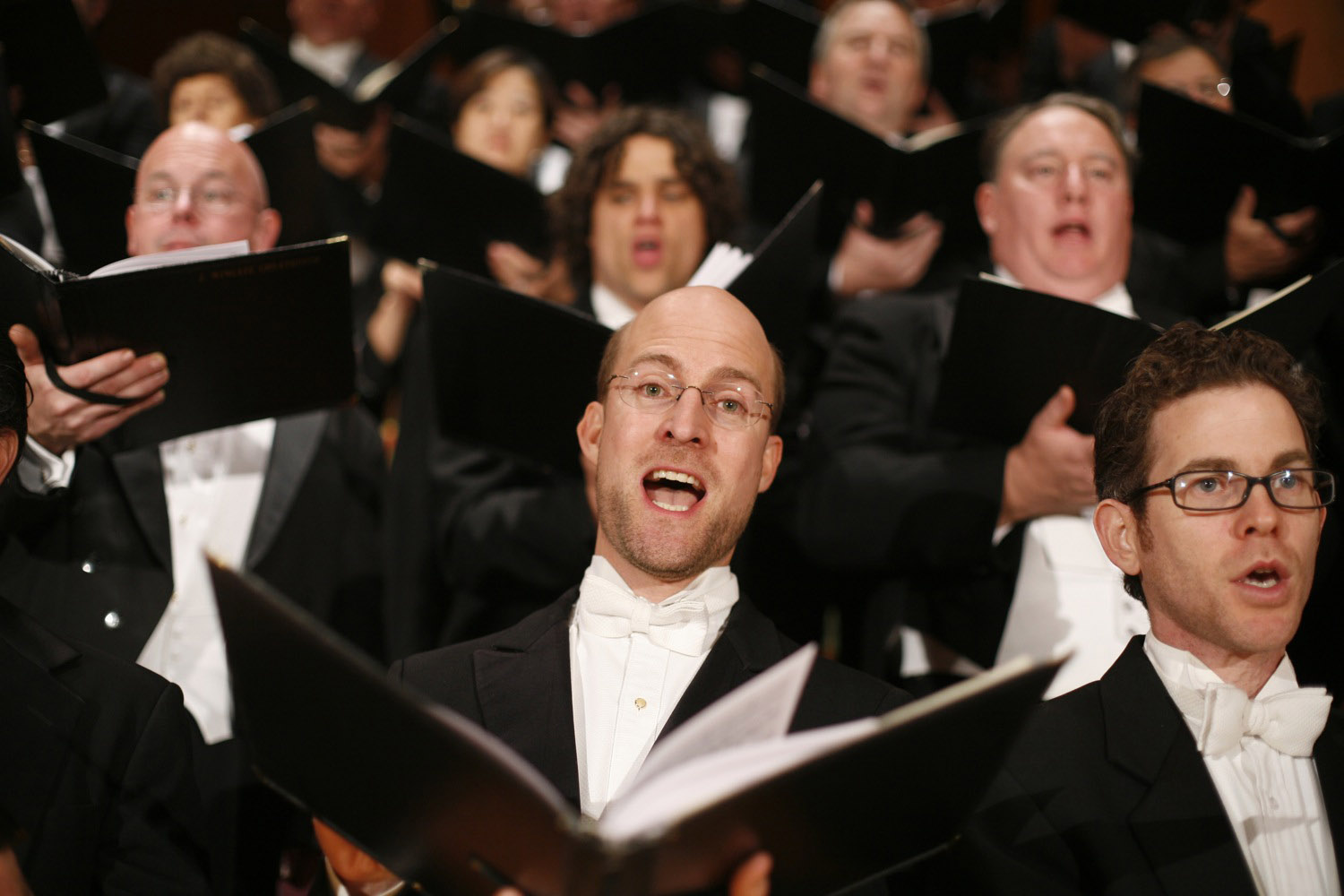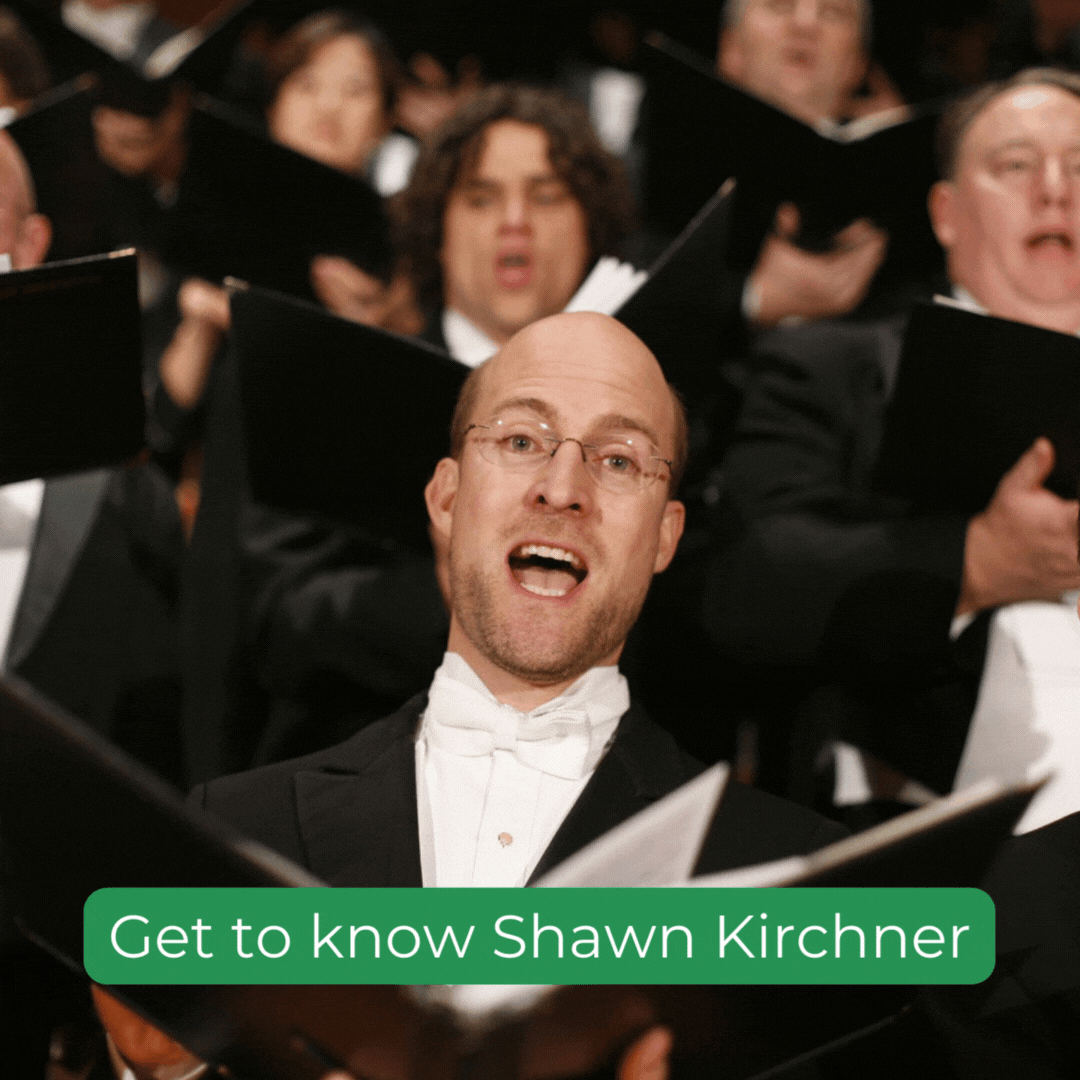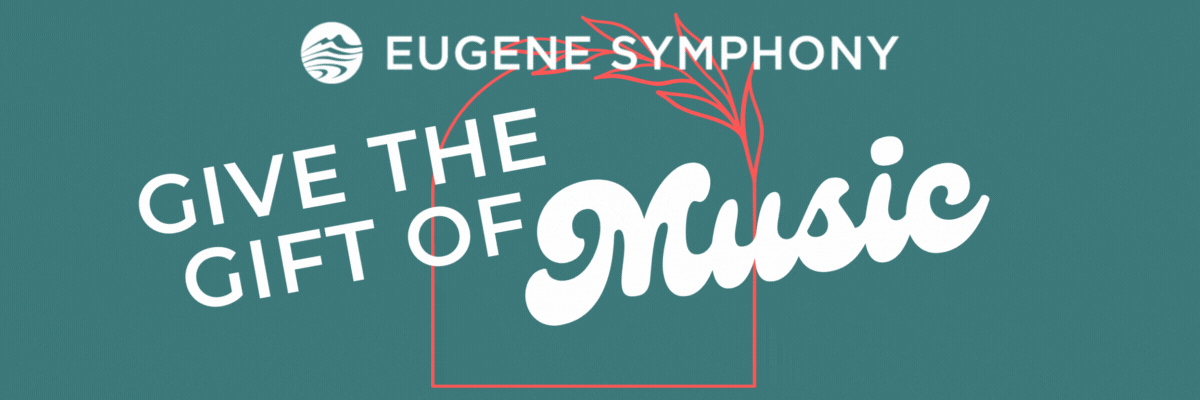Sat December 10 | 7:30 PM
Beethoven’s
Ode to Joy
Celebrate the holiday season with Ludwig van Beethoven's hymn to humanity, featuring the Eugene Symphony Chorus and a work by First Symphony Composer Gabriella Smith
TICKETSDecember 10, 2022 7:30 PM
Beethoven’s
Ode to Joy
Katherine Whyte, soprano
Abigail Nims, mezzo-soprano
Christopher Pfund, tenor
Michael Dean, bass
Eugene Symphony Chorus, Dr. Sharon Paul, Director
There is no experience that compares to hearing a live performance of Ludwig van Beethoven’s hymn to humanity, starting with the sounds of order emerging from chaos on through to the spine-tingling “Ode to Joy” that will bring you out of your seat in exultation at the end. We also hear First Symphony Project composer Gabriella Smith’s collage of sounds inspired by the natural world, an a capella work sung by the Eugene Symphony Chorus, and another stunning but rarely heard work for chorus and orchestra by Beethoven, Calm Sea and Prosperous Voyage.
The Guild Pre-Concert Talk will be held in the Silva Concert Hall from 6:30-7:00. Just a reminder, please sit in your ticketed seat during the pre-concert talk.
LEARN MORE
- Listen to the below Spotify playlist, curated by Music Director & Conductor Francesco Lecce-Chong, for inspiration and insight into this exciting classic.
- Listen to the below podcast from Sticky Notes: The Classical Music Podcast, for a deeper dive into the context and history of Beethoven's Symphony No. 9.
- Watch the below video of Music Director & Conductor Francesco Lecce-Chong introducing Beethoven's Ode to Joy offerings.
- Watch the below documentary by Kerry Candaele about Beethoven's Ninth Symphony. Filmed on four continents, this documentary film looks at the global impact of Beethoven's hymn to humanity, his battle cry of freedom, his Ninth Symphony.
- Download our Digital Program Book
- Read our First-Timers Guide to brush up on orchestra vocabulary and find out what to expect from a concert at the Hult Center
About Gabriella Smith

Gabriella Smith is a composer and environmentalist. She grew up in the San Francisco Bay Area playing and writing music, hiking, backpacking, and volunteering on a songbird research project in Point Reyes. Whether for orchestras, chamber ensembles, voices, or electronics, Gabriella’s music comes from a love of play, exploring new sounds on instruments, building compelling musical arcs, and connecting listeners with the natural world.

Many of Gabriella’s works address the climate crisis and the destruction of the environment. Through her music, she often tries to provide listeners with an emotional connection to the natural world in a plea for action. Mourning our planet’s loss of biodiversity, Gabriella’s Requiem is a 25-minute work for 8 singers and string quartet, written for Roomful of Teeth and Dover Quartet and commissioned by Bravo!Vail in 2018. Instead of the traditional Requiem text, the text of Gabriella’s Requiem is a list of the scientific (Latin) names of all the species that have become extinct in the last 100 years. Gabriella’s first full-length album, Lost Coast, deals with the grief, loss, rage, and fear experienced as a result of climate change, as well as the exhilaration, beauty, and wonder she has felt in the world’s last wild places and the joy and hope in getting to work on climate solutions. Originally conceived as a cello concerto, Lost Coast was written for and recorded with cellist Gabriel Cabezas, violist/producer Nadia Sirota, Gabriella singing, and all three of them playing found-object percussion. Lost Coast was recorded at Greenhouse Studios in Iceland and released on Bedroom Community. Gabriella has also written many works inspired by field recordings she has made of terrestrial and underwater soundscapes, including the sounds of dawn choruses, trees, cacti, tide pools, and coral reefs. Her upcoming work is dedicated to climate solutions through a variety of exciting initiatives currently in development.
Described as “high-voltage and wildly imaginative” (Philadelphia Inquirer), and “the coolest, most exciting, most inventive new voice I’ve heard in ages” (Musical America), Gabriella’s music has been performed all over the world by yMusic, Aizuri Quartet, Attacca Quartet, eighth blackbird, Bang on a Can All-Stars, Roomful of Teeth, Dover Quartet, Friction Quartet, PRISM Quartet, LA Phil, Nashville Symphony, Oregon Symphony, Cincinnati Symphony, and the Cabrillo Festival Orchestra, among others.
Recent highlights include the premiere of her organ concerto, Breathing Forests, written for James McVinnie and LA Phil, conducted by Esa-Pekka Salonen; and the premiere of music from Lost Coast for solo cello and backing track performed by Gabriel Cabezas on the New York Phil’s Nightcap series, curated by Nadia Sirota and Steve Reich. In April 2020, pianist/composer Timo Andres gave the online premiere of Gabriella’s new work Imaginary Pancake for solo piano following the cancellation of his Carnegie debut recital due to the COVID-19 pandemic. Currently she is working on a version of Lost Coast for cello and orchestra, to be premiered by Gabriel Cabezas and LA Phil in May 2023, conducted by Gustavo Dudamel.
Gabriella’s work Carrot Revolution was written for and recorded by the Aizuri Quartet on their Grammy-nominated debut album Blueprinting. Her music has also been recorded by yMusic (Maré and Tessellations on their album Ecstatic Science), Matt Haimovitz (bare on his album Primavera I: the wind), Friction Quartet (Inyo on Rising), Duo Noire (Loop the Fractal Hold of Rain on Night Triptych), Latitude 49 (Number Nine on Wax and Wire), Bang on a Can All-Stars (Panitao on more field recordings), and PRISM Quartet (Spring/Neap on The Curtis Project).
Gabriella has held residencies with the Nashville Symphony; Instituto Sacatar on the island of Itaparica in Bahia, Brazil; and a Copland House Residency at Aaron Copland’s home in upstate New York. She has received grants and awards from BMI, ASCAP, New Music USA, the Barlow Endowment, American Modern Ensemble, and the Theodore Presser Foundation, among others.
Gabriella received her Bachelors of Music in composition from the Curtis Institute of Music, where she studied with David Ludwig, Jennifer Higdon, and Richard Danielpour. After graduating, she returned to the Curtis Institute of Music as an ArtistYear Fellow for the 2015-16 season, dedicating a citizen-artist year of national service in the Philadelphia region. She attended Princeton University for graduate school, where she studied with Steve Mackey, Paul Lansky, Dan Trueman, Dmitri Tymoczko, Donnacha Dennehey, and Juri Seo.
When not composing, she can be found hiking, backpacking, birding, recording underwater soundscapes with her hydrophone, and volunteering on ecosystem restorations. She currently lives in Seattle.
About Shawn Kirchner

Shawn Kirchner is a composer/arranger/songwriter, singer, and pianist based in Los Angeles whose choral works are performed throughout the world. A member of the Los Angeles Master Chorale since 2001, Kirchner has enjoyed an enduring creative relationship with music director Grant Gershon, culminating in his tenure as the LAMC’s Swan Family Composer-in-Residence from 2012-2015. Kirchner has also collaborated with such leading ensembles as Conspirare, Santa Fe Desert Chorale, Lorelei Ensemble, San Diego Master Chorale, Los Robles Master Chorale, Coro Allegro, Atlanta Master Chorale, and Tonality.

Kirchner’s creativity is driven by his passion for songwriting, folk/carol traditions, and poetry – but fused with the improvisatory virtuosity of Baroque and bluegrass instrumental traditions. Best-known for his setting of the Kenyan song Wana Baraka and for Heavenly Home: Three American Songs – praised by the LA Times as “arranged with mastery” – Kirchner has also composed deeply expressive cycles on the poetry of Neruda, Plath, Hopkins, Blake, and the Psalms (Songs of Ascent). His original songwriting ranges in style from jazz and gospel to folk and bluegrass, the latter featured on his CD Meet Me on the Mountain. Kirchner’s music is published by Boosey & Hawkes, Oxford, Santa Barbara, and his own company at ShawnKirchner.com.
As a singer with the Los Angeles Master Chorale, Kirchner has sung with the Los Angeles Philharmonic in numerous performances with the world’s leading conductors, composers, and soloists. Kirchner has sung on LAMC’s recordings of Adams, Reich, Glass, Lang, Gorecki, and Muhly, and has been featured as a soloist on works of Perotin, Pärt, Ramirez, and Meredith Monk. He also sings countertenor in the touring ensemble for LAMC’s ground-breaking, fully-staged Lagrime di San Pietro, directed by Peter Sellars. As a session singer, Kirchner has sung on dozens of feature film soundtracks including Avatar, La La Land, and Frozen.
Raised with his triplet brother and sister in Cedar Falls, Iowa, Kirchner’s musicianship was shaped through intensive piano study with Joan Smalley and George Katz. His principal creative mentor is the banjo-playing poet Steve Kinzie, with much inspiration from American choral matriarch Alice Parker. Kirchner earned a BA in Peace Studies (Manchester University) and an MA in Choral Conducting (University of Iowa) where his teachers included William Hatcher, Richard Bloesch, and Donald Jenni. Kirchner’s outside interests include organic gardening, languages, J.R.R. Tolkien, and the Enneagram.
“Everything he touches turns to musical gold.” – Grant Gershon (Broadway World, 2/17/15)
Beethoven's Ode to Joy Program Notes

FIELD GUIDE Gabriella Smith (b. 1991)
DURATION: Approximately 10 minutes
Gabriella Smith is a self-described “composer and environmentalist,” raised in the San Francisco Bay Area. Her childhood, filled with outdoor adventures, cultivated in her a passion and a sense of responsibility to nature and its protection. Many of her works are inspired by this calling and have been composed for many musical mediums, including orchestras, chamber ensembles, voices, and electronics. Her music has been performed by leading ensembles and groups around the world, including the Los Angeles Philharmonic, San Francisco Symphony, the vocal ensemble Roomful of Teeth, Attacca Quartet, and others.
Field Guide was composed in 2017 and was commissioned by the Cabrillo Festival of Contemporary Music, in honor of the 70th birthday of legendary American composer John Adams. Of Smith’s works, Adams noted, “Gabriella’s buoyant and energetic music is like a gust of fresh air and carries with it a hint of what our future American music can be.” The piece begins with an opening section reminiscent of a scene in a rainforest, complete with bird songs and frog calls. Before long, the scene is interrupted by the rhythmic pulse of urban life, with dissonances heightening the jarring nature of human presence in our once-tranquil soundscape. Smith describes the approach of her composition style as an attempt “… to provide listeners with an emotional connection to the natural world in an invitation to find joy in climate action.”
SCORED: For three flutes, three oboes, three clarinets, three bassoons, four horns, three trumpets, three trombones, tuba, percussion, and strings.
HISTORY: This is the first Eugene Symphony performance.
HALLELUJAH Shawn Kirchner (b. 1970)
DURATION: Approximately four minutes
A titan in the field of choral music, Shawn Kirchner is a composer, songwriter, arranger, and performer based in Los Angeles whose work is featured by choirs around the United States and abroad. A multi-faceted musician, his musical style is wide-ranging, including influences of bluegrass, folk, country, gospel, and jazz. His work as a musician has been featured in some of the most prestigious performance spaces in the world, including Walt Disney Concert Hall in Los Angeles and Lincoln Center in New York City.
Hallelujah is the first movement of Heavenly Home, Kirchner’s six-part setting of a beloved “Sacred Harp” melody. Sacred Harp is a tradition of choral music that originated in New England and was later carried on in the American South. The Sacred Harp style is characterized by unique musical notation, being sung a cappella or without accompanying instruments, and a unique formation of the choir in which each section faces each other, rather than all facing in one direction.
Hallelujah was inspired by Kirchner’s love of the works of J.R.R. Tolkien, specifically a passage from Fellowship of the Ring, Tolkien’s first part in his fabled Lord of the Rings series. In the passage, Tolkien describes a dream-vision by the hobbit Frodo: “… [he] heard a sweet singing running in his mind: a song that seemed to come like a pale light behind a grey rain-curtain, and growing stronger to turn the veil all to glass and silver, until at last it was rolled back, and a far green country opened before him under a swift sunrise.”
The work begins with a rocking introduction by sopranos and altos, repeating, “Hallelujah.” The Sacred Harp melody that the piece is built upon is introduced in the baritones, which increases in strength as it is passed to different sections, depicting the growing light Tolkien describes in his passage. The piece closes on a final, beautiful chord as the choir arrives on the final word, “Home.”
SCORED: For chorus a capella
HISTORY: This is the first Eugene Symphony Chorus performance.

CALM SEA AND PROSPEROUS VOYAGE, OP. 112 Ludwig van Beethoven (1770–1827)
DURATION: Approximately 10 minutes
One of Ludwig van Beethoven’s greatest strengths was his ability to translate the inspiration he drew from the artwork of others into music. Perhaps his greatest inspiration was drawn from the works of German polymath Johann Wolfgang von Goethe, widely considered the most influential writer of the German language whose writings had a profound effect on Western literature, as well as on political and philosophic thought. His novel The Sorrows of Young Werther and his tragic play Faust mark the early stages of Romanticism, the art movement that viewed the spectrum of emotion as essential to the human experience as the reason and logic upheld as virtues by the Enlightenment period. Beethoven would set numerous Goethe works to music, most famously the incidental music to Goethe’s play Egmont.
Calm Sea and Prosperous Voyage was one such work, a later piece by the composer, first performed in 1815 and later published in 1822. The text is drawn from two poems by Goethe, Meeresstille (Calm Sea) and Glückliche Fahrt (Prosperous Voyage). The two poems are a fascinating study in contradictions—normally, danger at sea is equated with violent storms, but Goethe paints an image of a sailor stranded at sea because of the stillness of the water and wind. By contrast in Prosperous Voyage brings hope in the form of wind and the stirring of the waves.
Beethoven captures the oppressive stillness at the beginning of the work with strings holding chords and the choir slowly intoning the words of the poem. The calm nature of the music is interrupted by brief cries from the chorus to portray the sailor’s despair. Wind begins to stir slowly as the strings and woodwinds trade quiet ascending and descending lines. Before long, the wind has grown strong enough to fill the sails and the orchestra plays victoriously as the chorus proclaims, “The fog is torn, the sky is bright, and Aeolus releases the fearful bindings.” The piece comes to a joyful conclusion as the ship makes its way to land.
SCORED: For two flutes, two oboes, two clarinets, two bassoons, four horns, two trumpets, timpani, strings, and chorus.
HISTORY: First performed by Eugene Symphony in December 2010 under the direction of Danail Rachev
SYMPHONY NO. 9 IN D MINOR, OP. 125 “CHORAL” Ludwig van Beethoven (1770–1827)
DURATION: Approximately 65 minutes
For Ludwig van Beethoven, his final symphony and magnum opus was the summarizing thesis for his life and the lessons he took from it. He was born and raised in the German city of Bonn, a city not unlike Eugene—small, colorful, and known in their respective countries and times as liberal bastions. Bonn’s free-thinking culture revolved around a fierce passion for ideas of the Enlightenment, centering on the ideal that the United States would be built upon when Beethoven was six years old that, “all men are created equal.” This was during a time when Germany was still ruled by a monarchy. It was in Bonn that Beethoven first heard Friedrich Schiller’s poem, “Ode to Joy” as a teenager and resolved to set it to music some day.
Musically, the Ninth Symphony follows Beethoven’s trend of pushing the envelope in terms of scope and difficulty. His Third Symphony’s first movement alone was longer than most symphonies in their entirety written before it. In the Fifth Symphony, Beethoven would add trombones to its final movement, instruments that had never been used in a symphonic setting before. In all his works, he demanded more from both performers and listeners of his music than any previous composer before him.
The composer began official work on the piece in 1820 at the age of 49, with its premiere taking place in 1824. By this time in his life, Beethoven was completely deaf and socially isolated. His propensity for violent outbursts and bouts of deep depression had left him with few meaningful friendships or relationships. Ill health and severe stomach issues that had plagued him his entire life had reached an unbearable level. When asked what the subject for his new work would be, he said, “The search for a way to express joy.”
With the Ninth Symphony, Beethoven presents a sonic portrait of humanity, with each movement representing an aspect essential to our experience. The first movement is war, not only amongst nations, but also within families, between spouses and friends, and especially within oneself. It begins in medias res, a narrative already underway, with quietly pulsating strings and static winds. Flashes of a motif in the violins appear as the orchestra builds, which develops into a thunderous theme. The movement is terrifying in its ferocity and complexity, with moments of peace few and far between. It ends with a funeral march over chromatic lines.
The next human aspect portrayed is play, in the form of a raucous, scherzo second movement that conjures the image of drunken Dionysian revelry in the woods. Despite its bouncing and cheerful facade, the key of the movement is still in D minor, giving the playful movement the twinge of discomfort one feels when encountering someone especially inebriated and without control. The wild dance is interrupted by a beautiful soaring theme in the woodwinds.
The third, slow movement represents family and the peace that comes with belonging. An introduction starting in the woodwinds ushers into a warm and embracing theme in the strings. The theme is developed expertly, with variations and embellishments, but never losing its sense of deep tranquility.
The fourth and final movement is when Beethoven’s true agenda reveals itself. The movement begins with a storm, quickly devolving into a section featuring the cellos and basses. Ghosts of past movements appear, but are interrupted by the lower strings who refuse to reiterate what has already passed. With their eyes on the horizon, cellos and basses dare to whisper a new theme, one of freedom, unity, and equality, that defines the whole work. Like a cleansing fire, it spreads throughout the orchestra quickly, building into a fanfare. The theme and the idea it represents is so compelling and revolutionary that voices enter, something never before heard in a symphony.
A solo baritone enters, with the proclamation, “Oh friends, no more of these sounds! Let us sing more cheerful songs, more full of joy!” Soon the entire chorus joins, singing the words of Schiller’s “Ode to Joy” poem that Beethoven had first encountered as a teenager.
The middle section features a Turkish March, with the signature bass drum, cymbals, and piccolo accompanying a solo tenor. One should not overlook the significance of the composer including a musical device meant to represent the culture of the Middle East in a work about the brotherhood of all mankind, a region of the world that most audience members in Europe during the composer’s lifetime associated with religious wars and barbarism. The symphony ends in a complete frenzy, with blaring brass and interweaving winds and strings.
The Ninth Symphony was conceived by a deaf and sick man, whose volatile and self-centered nature prevented him from maintaining friendships and partnerships, and with whom many of us would avoid interacting if he were in our lives today. Despite this, as Beethoven reaches through time and offers his hand with a sonic message of unity and humanism, listeners cannot help but take it and through him, ultimately clasp hands with one another.
SCORED: For two flutes, piccolo, two oboes, two clarinets, two bassoons, contrabassoon, four horns, two trumpets, three trombones, timpani, percussion, strings, chorus, and soprano, alto, tenor, and bass soloists.
HISTORY: First performed by Eugene Symphony in April 1977 under the direction of Lawrence Maves, and last performed in May 2016 under the direction of Danail Rachev.
Enter the Eugene Symphony Lottery
Are you feeling lucky? Enter the Eugene Symphony lottery for the chance to win two tickets to an upcoming concert! Fill out this form, including contact information and choose from a variety of our symphonic concerts that you would like to attend. If you are a winner, you will be contacted one week before the concert to collect your winnings.
Health & Safety
The health and safety of Eugene Symphony audience members, musicians, and staff members has been and will always be our top priority. We strongly welcome and encourage patrons who wish to continue wearing masks while attending performances to do so. We want all of our attendees to feel comfortable and accepted in your choice. You take care of you, we'll take care of the music and ensuring that your experience attending a Eugene Symphony concert remains exceptional.
For the most up to date health and safety protocols for our concerts, visit our Eugene Symphony Safety page.
LOCATION: Hult Center for the Performing Arts





